Have you ever owned an air plant or Tillandsia? These hardy, pretty, and low-maintenance plants are popular home, office, and garden decorations. However, they also represent a diverse, fascinating group of plants that live a very particular lifestyle. These epiphytic plants spend most or all of their lives in the air, sometimes never touching the ground! But how is that possible? And just what are epiphytes?
In this Wildlife Spotlight post, we’ll learn more about these wonderful plants and their importance in natural spaces.
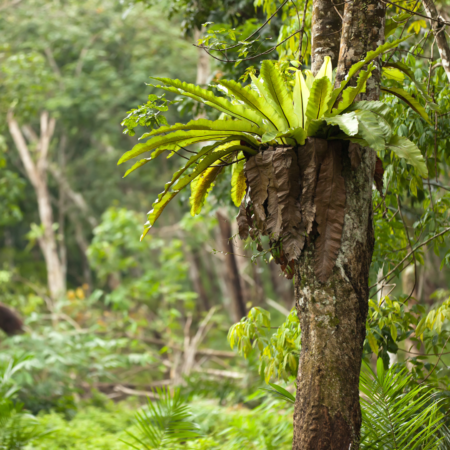
“Upon-plants”
The word epiphyte comes from the Greek epí, for “atop” or “upon”, and phyton, for “plant”. So you can think of them as “plants that live upon plants”. Sounds weird, right? Well, it is! Most plants we encounter live rooted in the soil, with a small number that float in water. Yet there are around thirty thousand described species of epiphytes, around 1 in every 10 plant species. That’s three times more than the number of bird species worldwide!

To get a little more specific, epiphytes are plants that live on top of other plants, without directly feeding off of them for resources. That means that parasitic plants like mistletoe don’t count as epiphytes, even though they live in trees. The plants on which these upon-plants life are called phorophytes.
Types of epiphytes
There are two major divisions within these weird, airborne plants:
- Holoepiphytes, which spend their entire lives in trees and never touch the ground. In other words, they complete their life cycle on top of another plant and never make contact with the Earth!
- Hemiepiphytes that spend part of their life cycles as upon-plants. They often start as seeds dispersed onto another plant, then send roots down to the ground. This helps them collect resources they would not otherwise be able to access.

Common epiphytes
Being an epiphyte is a matter of lifestyle, not of taxonomy or species. In other words, any type of plant can be an epiphyte if it adapts to living on top of other plants. Here are some examples of plant groups with lots of airborne species:
- Lichens. While they aren’t actually plants, they are the most common epiphytes in more Northern biomes.
- Mosses. Ever found moss growing on the side of a tree? That’s an epiphyte!
- Ferns. One third of all fern species live an epiphytic lifestyle!
- Orchids. Most tropical orchids are epiphytes. Scientists think that there could be thousands of undiscovered species in the world’s rainforest canopies.

- Bromeliads. This group includes Spanish moss or Tillandsia, the most popular domestic epiphyte.
- Cacti. You read that right! The hardiness of cactus plants for tough conditions makes them well-adapted for the upon-plant lifestyle.
The Epiphyte Lifestyle
Living on top of another plant and not putting roots down can be challenging for epiphytes. It means they have unique difficulties in solving common plant problems. These might include:
- Dispersing seeds to new upon-plant habitats (or phorophytes).
- Pollinating flowers
- Getting enough water
- Obtaining nutrients
Water and nutrients
Without roots in the ground, epiphytes need to use some very different tactics to get what they need. On land, they can only get nutrients and water from rain and the surrounding canopy environment. For many species, this means collecting fallen leaves and rainwater with cup-shaped leaves. This helps some epiphytes make their supplies last!
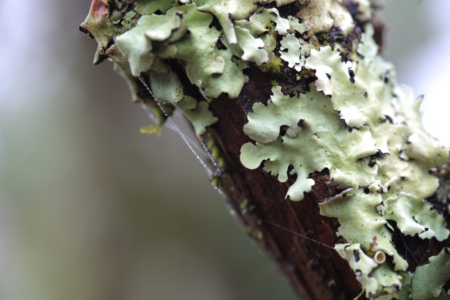
Other epiphytes, particularly cacti and some ferns, are capable of going a long time without water or nutrients. While all epiphytes tend to grow super slowly because of these harsh conditions, ferns can even go dormant. In other words, they press pause on their photosynthesis and other cellular functions and wait until more resources are available. Most epiphytes grow less than 1cm (0.4in) in a year, and don’t grow at all in some years! This means that even very small epiphytes can be many years old.
The roots of orchid epiphytes have a special layer called the velamen which can quickly absorb water from dew or rainfall. The velamen can hold onto this water and make it last, helping the orchid get more from each opportunity for water. This layer is also what makes orchid roots look whitish and pale when they’re dry, but green when they are wet. There is a layer of photosynthetic green tissue underneath that can help generate energy when conditions are right!
Dispersing seeds
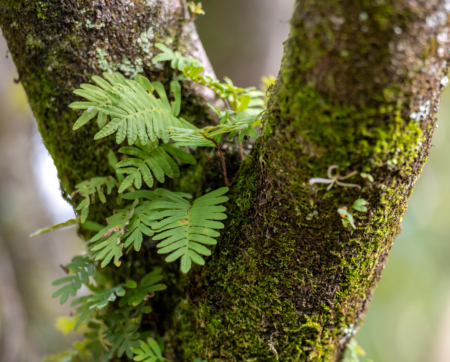
Most epiphytes have tiny seeds that can drift on the wind. That way, they don’t have to rely on other land-based forms of seed dispersal. In the case of mosses and their relatives, they have spores instead of seeds, which are similarly tiny. Epiphytic orchids have some of the smallest seeds among all of the world’s plants. They can look like a fine dust when they spread in the air!
In fact, the tiny black specks in vanilla iced cream are seeds from the vanilla orchid (Vanilla planifolia)! Did you know that one of the most popular sweet flavors in the world comes from a flower?
Where can you find epiphytes?
Because water can be hard for epiphytes to find, they are more common in wetter habitats where water is abundant. For example, epiphytic lichens are much more common along ocean coasts and the edges of rivers and lakes. The majority of epiphyte species, especially larger plants, occur in tropical rainforests.
There are also epiphytes in aquatic habitats. For example, many marine epiphytes live on top of large marine plants like kelp.
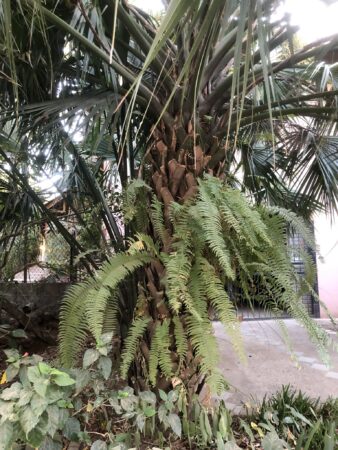
Not just for decoration
Although they live on top of larger plants, epiphytes are more than just icing on the cake. In fact, they have real impacts on their phorophytes and the surrounding ecosystems. For example, their ability to capture and retain moisture and falling debris can make them valuable micro-habitats. They also function like air conditioners, creating cool, moist hiding places to shelter animals from the harsh canopy sun.
Tank bromeliads in South America can store up to 2 gallons (8L) or water, providing airborne watering holes for canopy animals. Bromeliads and other epiphytes also provide aquatic habitats for the tadpoles of Poison dart frogs (Dendrobatidae) and even canopy crabs! In Southeast Asia, the epiphytic birds nest fern (Asplenium nidus) makes moist microhabitats like compost piles that support huge communities of invertebrates. Thanks to epiphytes, hundreds if not thousands of animal species can live fascinating lives at the tops of rainforest trees!
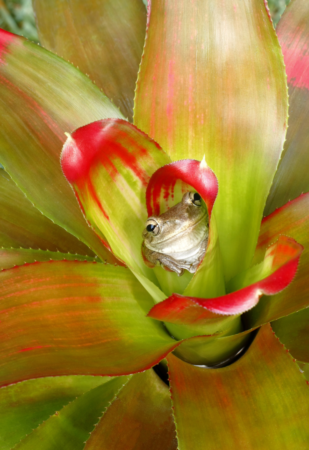
Of course, all of this vibrant life in the treetops means extra weight for the phorophyte, the plant holding up all these micro-worlds. That extra weight can be a problem. While creating thriving mini-ecosystems in the branches of huge rainforest trees, large epiphytes can also weigh their branches down. Consequently, those branches may come crashing down, the whole kit-and-kaboodle, to the ground!
This actually provides a valuable form of disturbance in tropical rainforests. In other words, it prevents large trees from hogging all of the sunlight, and makes gaps in the canopy for other species to grow. Some tree species actually develop rapidly peeling bark to slough off epiphytes and prevent them from weighing down their trunks or branches.
Thanks for reading about epiphytes!
Have you come across any cool epiphytes in your outdoor adventures? Share with us in the comments!

